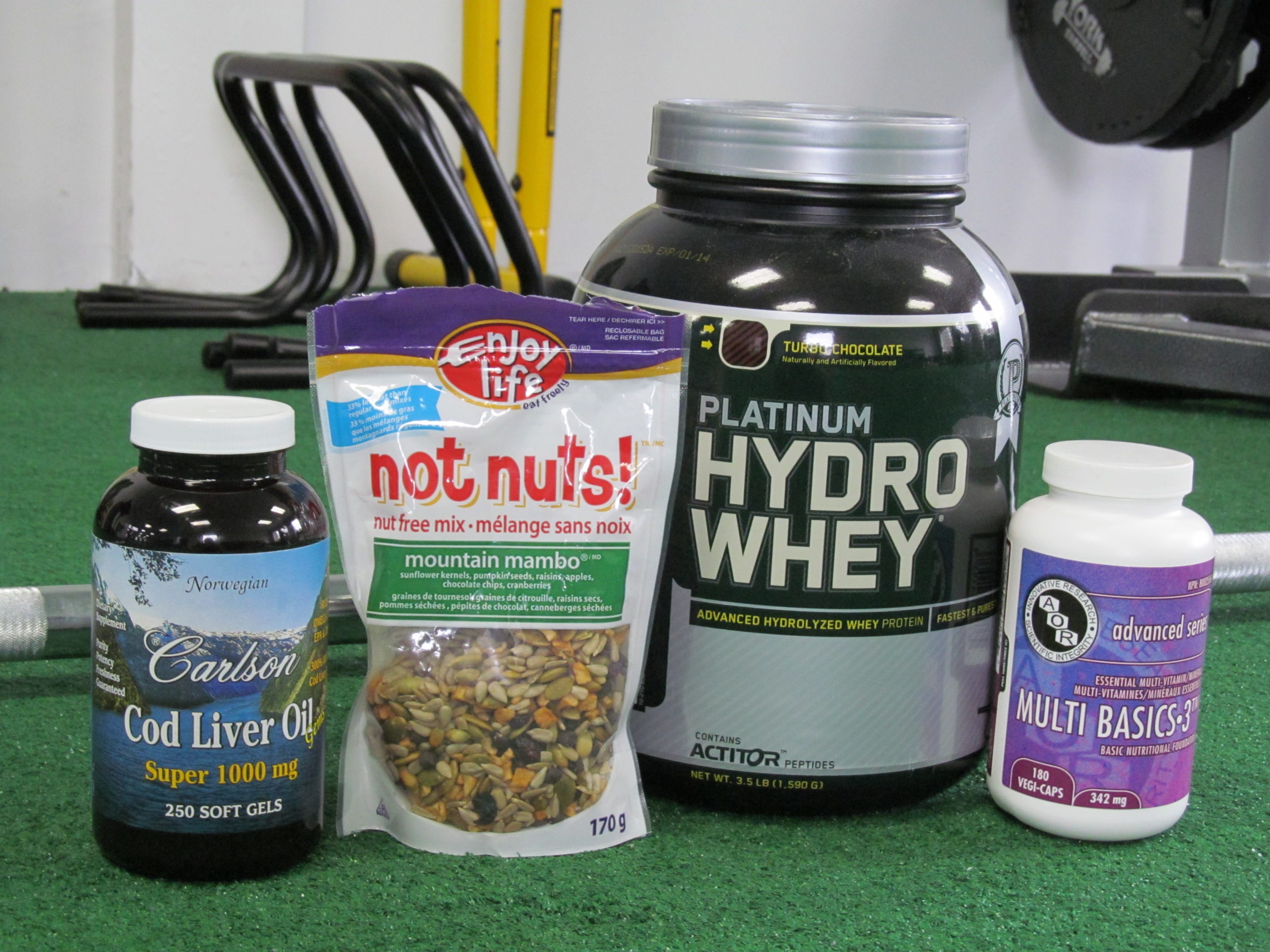Modified Intermittent Fasting
Intermittent fasting (IF) is a popular method of dietary regulation. Its most common form features a fasting period of sixteen hours alternated with a feeding period of eight hours. From a physiological perspective, IF causes weight loss with the associated health benefits. From a behavioural perspective, IF is easy to sustain as it requires minimal calorie counting and food restriction. Most importantly, unlike other diet plans, IF results in daily fullness (since a whole day of eating is crammed into an eight hour period). Unfortunately, IF is a poor choice of dietary regulation for serious anaerobic athletes as fasting periods interfere with maximal muscle protein synthesis (MMPS). MMPS (the greatest rate of muscle development) is necessary for maximal performance, recovery and definition. It requires a total protein intake of 1.6 to 2.2 grams per kilogram body weight¹ spread evenly (in doses ranging from 4 to .55 grams per kg body weight¹) throughout the day. Can the benefits of IF be combined with the requirements of MMPS?
Proponents of strict fasting argue the practice improves insulin efficiency, maintains daytime energy levels and allows fat loss (amongst other things). A modified version of IF would involve substituting strict fasting periods with protein periods to accommodate MMPS. Although sacrilegious to fasting fanatics, protein periods (featuring low or no carbohydrates) would still improve insulin function, maintain alertness and allow fat loss to occur (especially if the usual eight hour feeding period were reduced). Protein does not result in significant changes in blood sugar and is associated with improved insulin sensitivity. Besides, our bodies are store houses of readily accessible protein, carbs, fats and toxins – does a truly fasted state (as espoused by strict fasting zealots) really exist? In addition to those benefits already mentioned in regard to MMPS, a higher protein intake would also result in greater feelings of satiety and provide more protein derived nutrients (such as creatine, carnitine, carnosine, heme iron, immunoglobulins, dha/epa, K2, D3 etc.). I have been using a modified version of intermittent fasting (MIF) ever since Ori Hofmekler disclosed the concept of the Warrior Diet. Both simple and advanced renditions of MIF have resulted in dramatic AND sustainable changes in myself as well as clients. Below is an outline of a MIF plan without specific food or supplement recommendations (suitable for a 175 lb individual).
Modified Intermittent Fasting Protocol
Breakfast
30 grams protein
Three hours later
30 grams protein
Three hours later
30 grams protein
Three hours later
30 grams protein
Three hours later
6 hour “open” feeding period
(including 55 grams of protein to meet the day’s total protein requirement )
***make sure you consult with a registered dietician before starting or changing a diet plan***
A compromise between MMPS and intermittent fasting is possible. MIF retains much of the flexibility, convenience and satisfaction of the most popular mode of IF and includes the result boosting power of MMPS. For serious anaerobic athletes there exists no other way!
- Brad Jon Schoenfeld and Alan Albert Aragon, “How much protein can the body use in a single meal for muscle-building? Implications for daily protein distribution,” International Journal of Sports Nutrition, 2018, 15:10.

Recent Comments